Henry Pierson Harland 1876-1945
© Richard Graham
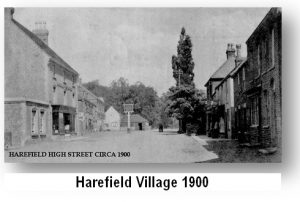
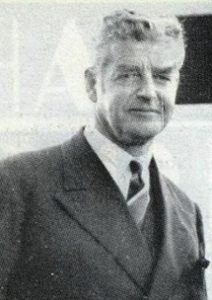 Henry Pierson Harland was born on 1 September 1876 at Harefield, Middlesex, England.
Henry Pierson Harland was born on 1 September 1876 at Harefield, Middlesex, England.
Henry was a son of the vicarage: his father, Rev Albert Augustus Harland M.A being Vicar of Harefield and a Fellow of the Society of Antiquaries (F.S.A.) To be elected, one had to be ‘excelling in the knowledge of the antiquities and history of this and other nations’.
During Henry’s childhood, Harefield would have been a small idyllic village, its origins going back to Saxon times and having been mentioned in the Domesday Book.

One of the most beautiful parish churches in England, the history of St Mary the Virgin goes back centuries possibly as far as 1086AD. The vicarage where Henry was born had been built in 1852, by the voluntary subscription of the parishioners, and was surrounded by 8½ acres of land so he would have enjoyed a carefree lifestyle as a child
Henry’s grandfather Dr William Harland (1787-1866) had been Mayor of Scarborough on three occasions as well as being a successful physician, with his own medicinal baths at the bottom of Vernon Place. He and his wife Anne (Pierson) had 11 children so the house must always have been a hive of activity.
His uncle Edward James Harland (1831-1895) – pictured below – one of the 11 children, went on to establish (in partnership with Gustav Wolff) the Belfast shipbuilding firm of Harland & Wolff in 1861, having moved to Belfast from Yorkshire in 1854.
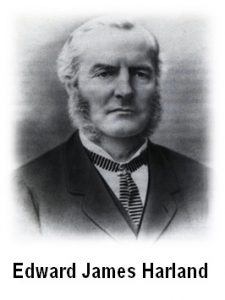
Henry was educated at Rugby School, one of England’s finest public schools, where he would have been a boarder as it was many miles from his home in Harefield
No doubt influenced by his uncle’s success in Belfast, Henry joined the firm of Harland & Wolff in 1893 at the age of 17 as a premium or gentleman’s apprentice. By that time Sir Edward Harland had retired from taking an active part in the business (since 1889 when he became MP for North Belfast), leaving the day to day control to Walter H Wilson and William Pirrie (pictured below). These two men had also entered “the Yard” as premium apprentices in 1857, as had Thomas Andrews the son of another prominent Ulster family four years earlier in 1889

In his early years at Queens Island, and during the rapid expansion of the yard under Pirrie and Wilson, Henry Harland did not receive any preferential treatment because of his family name. Although Thomas Andrews, upon completing his apprenticeship in 1894, was appointed an outside Manager, Harland’s rise appears not to have been as meteoric. Andrews’ mother was William Pirrie’s sister Eliza, so this may have played a part in his career advancement
In 1910, Pirrie had expressed concerns that as the Home Rule Bill for Ireland made its way through parliament, it may be necessary to close the shipyard in Belfast, should civil war break out in the city. As a result by 1912, he had put in place plans to take over the Govan Yard on the Clyde in Scotland should things deteriorate in Ulster.
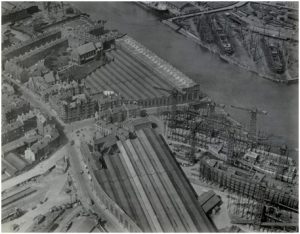
By this time, it would appear that Pirrie considered Henry to be ready for his first major career challenge and he was sent to Govan in 1912 to supervise the construction of sub-contracted vessels through Pirrie’s arrangement to take over the yard at Govan in a deal made with Mackie and Thomson the original owners. Pirrie prudently put plans in place to rebuild the Govan yard and Henry Harland, as yard manager was pivotal in this development (see above for an aerial view of the reconstructed yard)
Under Henry Harland’s management the yard was completely rebuilt during the period 1913 – 1917, an important period for the supply of ships to the government. As a result H&W’s Govan shipyard became one of the largest, most modern and efficient on the Clyde
In March 1917, William Pirrie was invited by the British Prime Minister to accept the newly created post of Controller General of Merchant Shipbuilding, an immensely important position he would hold in addition to his chairmanship of H&W and the Royal Mail Group. Because of this enormous workload, Pirrie was forced to delegate some of his responsibilities at Belfast. George Cumming was appointed Deputy Chairman and Henry P Harland was transferred from Govan where he had been sent in 1912, to the London office of H&W as the chairman’s personal assistant. The importance of this appointment should not be underestimated. Pirrie was an extremely secretive and autocratic man and kept the private ledger for the Belfast firm in the office at London, where even Cumming could not get access to the essential financial information required for the overall management of the business. This would confirm that Pirrie held Henry Harland in a position of great trust that few of his other manager’s would enjoy.
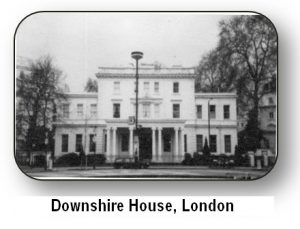 The London office had been opened in March 1907 and was situated at 1A Cockspur Street, a magnificent building just off Trafalgar Square, also housing the offices with the Oceanic Steam Navigation Company. Prior to this Pirrie had used Downshire House (right) his London home as his office, guarding the all important private ledgers and balance sheets relating to the business in Belfast. Henry Harland would have been a regular visitor to Downshire House to discuss strategy for the company following his move to London.
The London office had been opened in March 1907 and was situated at 1A Cockspur Street, a magnificent building just off Trafalgar Square, also housing the offices with the Oceanic Steam Navigation Company. Prior to this Pirrie had used Downshire House (right) his London home as his office, guarding the all important private ledgers and balance sheets relating to the business in Belfast. Henry Harland would have been a regular visitor to Downshire House to discuss strategy for the company following his move to London.
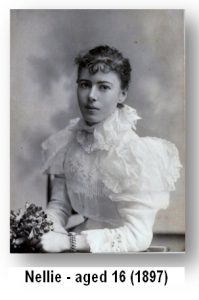 It was also in 1917, and following his appointment to the London Office of Harland & Wolff, that Henry Pierson Harland married Helen (Nellie) Reilly Andrews (1881-1966), the widow of his former management colleague at Harland & Wolff, Thomas Andrews (1873-1912).
It was also in 1917, and following his appointment to the London Office of Harland & Wolff, that Henry Pierson Harland married Helen (Nellie) Reilly Andrews (1881-1966), the widow of his former management colleague at Harland & Wolff, Thomas Andrews (1873-1912).
Andrews had been Managing Director of the company in Belfast but had lost his life aboard RMS Titanic, of which he was chief designer, when the ship sank in the North Atlantic on 15 April 1912.
Henry Harland had been a suitor for Helen’s hand at the same time that Thomas Andrews showed an interest in wooing her some 10 years before. Helen was the daughter of John Doherty Barbour (1824-1901), a leading industrialist, politician, and chairman of the Linen Thread Company, one of the largest textile producing conglomerates in the world, which included the family firm of William Barbour & Sons, based at Hilden. As such she would have been considered a suitable and desirable wife to any young man of appropriate position in Edwardian Ireland.
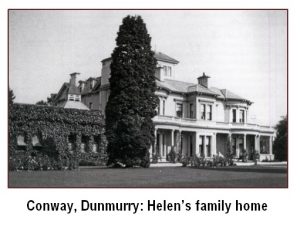 Because of her indecision, Helen’s mother is reputed to have locked her in her room at Conway, the family home, and threatened not to let her out again until she decided whether she should marry Thomas or Henry. She chose Thomas and they were married on 24 June 1908 at Lambeg Parish Church.
Because of her indecision, Helen’s mother is reputed to have locked her in her room at Conway, the family home, and threatened not to let her out again until she decided whether she should marry Thomas or Henry. She chose Thomas and they were married on 24 June 1908 at Lambeg Parish Church.
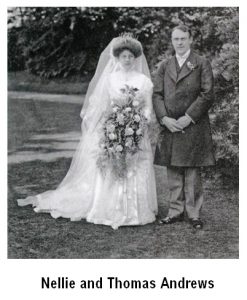
Thomas and Nellie had one daughter, Elba, born on 27 November 1910 at the family home Dunallan, on Windsor Avenue in Belfast. Elba must have been the centre of attention of both the influential Andrews and Barbour families following the tragic death of her father aboard Titanic. Helen had barely spent four years of her married life together with Thomas when she was left a widow at the age of 31
Following her re-marriage to Henry, Helen left Belfast to start a new life with her husband near London. Helen had been born at Warwick, (although she grew up in Belfast) near to where her father had business interests in Leamington Spa, where he was elected to serve as Mayor later in his life. Her mother died there at the Regent Hotel in 1934.
The newlyweds wasted no time in starting a family and their first child, a son Albert, was born on 20 November 1917. Henry and Helen had 3 more children: daughters Evelyn (b 1918), Louisa (b 1920) and Vera (b 1924).
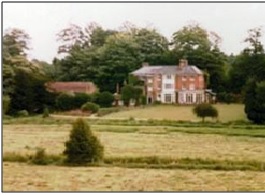 The family later moved to Otterspool House, a large house on the banks of the River Colne near Aldenham, Watford. The house was owned by John Pierpoint Morgan (1867-1943), son of the owner of the White Star Line, and leased to Henry under a tenancy agreement. The original house dated back to 1798, and had a succession of owners until the Harlands took up residency in the 1930s.
The family later moved to Otterspool House, a large house on the banks of the River Colne near Aldenham, Watford. The house was owned by John Pierpoint Morgan (1867-1943), son of the owner of the White Star Line, and leased to Henry under a tenancy agreement. The original house dated back to 1798, and had a succession of owners until the Harlands took up residency in the 1930s.
By 1921, Henry Pierson Harland had secured a position of financial security and prestige as a shareholder in Harland and Wolff with 10 shares valued at £1,000 each, as had his brother’s Albert and William. With 507 shares, Pirrie was not as many people thought the major shareholder: this was John Brown & Co with 560.
During the summer of 1921, IMM (International Mercantile Marine) entrusted H&W with the work of completing work on two massive half-completed German liners that had become the property of the Ministry of Shipping as war reparations. Pirrie put Edward Wilding and Henry Harland in charge of this project: Wilding being based in Belfast while Harland, based in London, would chair the Hamburg Committee, overseeing the work in Danzig.
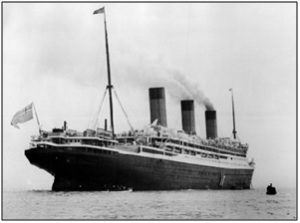 One of the liners, previously named the Bismark and started in 1914, was re-named RMS Majestic and launched in May 1921. The project had not been easy for Henry Harland, as there were difficulties involved in communication between Belfast, London and Germany, but Pirrie, not an easy man to please, was impressed by the way in which Wilding and Harland conquered these obstacles. Henry headed the Majestic’s guarantee group from Harland & Wolff for the maiden voyage from Southampton to New York on 10 May 1922, as had Thomas Andrews with the Titanic in April 1912. On arrival, at Ellis Island in New York, Henry described himself as a ‘shipbuilder,’ rather than being any more specific.
One of the liners, previously named the Bismark and started in 1914, was re-named RMS Majestic and launched in May 1921. The project had not been easy for Henry Harland, as there were difficulties involved in communication between Belfast, London and Germany, but Pirrie, not an easy man to please, was impressed by the way in which Wilding and Harland conquered these obstacles. Henry headed the Majestic’s guarantee group from Harland & Wolff for the maiden voyage from Southampton to New York on 10 May 1922, as had Thomas Andrews with the Titanic in April 1912. On arrival, at Ellis Island in New York, Henry described himself as a ‘shipbuilder,’ rather than being any more specific.
The Majestic remained the largest liner afloat at 57,000 tons until the launch of the Normandie by France in 1935
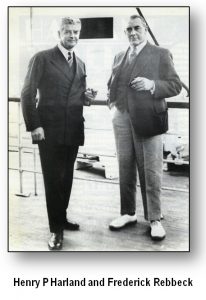 In 1929, Henry Harland was made a director of Harland & Wolff, and subsequently was elected onto the boards of other associated companies. He represented the interests of the subsidiary ship finishing company of Heaton Tabb & Co based in London (of which he was chairman) and later became a director of Short & Harland, following the move of Short Brothers to Belfast in 1937. This new company was 50% owned by Harland & Wolff, the idea being instigated by the then chairman Frederick Rebbeck (photographed with Henry Harland – cigar in hand – aboard the liner Capetown Castle 1938)
In 1929, Henry Harland was made a director of Harland & Wolff, and subsequently was elected onto the boards of other associated companies. He represented the interests of the subsidiary ship finishing company of Heaton Tabb & Co based in London (of which he was chairman) and later became a director of Short & Harland, following the move of Short Brothers to Belfast in 1937. This new company was 50% owned by Harland & Wolff, the idea being instigated by the then chairman Frederick Rebbeck (photographed with Henry Harland – cigar in hand – aboard the liner Capetown Castle 1938)
On Friday 22 October 1937, Henry Harland represented H&W at the funeral of J Bruce Ismay at St Paul’s Church, Knightsbridge. Following the Titanic disaster, Ismay became somewhat of a controversial character and retired in disgrace to Co Galway. He died at Mayfair, London.
Henry was entitled to use an impressive list of qualifications to his name, these included:
Membership of the Institute of Naval Architects (M.I.N.A.)
Membership of the Institute of Marine Engineers (M.I.M.E)
Member of the Court of the Worshipful Company of Shipwrights
Member of the General Committee of Lloyds Register
Member of the Consultative Committee of Shipbuilders and Engineers conferring with Marine Department of the Board of Trade
In his later years, Henry P Harland became increasingly interested in politics. As manager of the London Office of Harland & Wolff, he would have had enormous experience as an ambassador for the company in obtaining new business and looking after existing customers of the yard, so political life and the requirements of politics would have become second nature to him
He had long been associated with the Aldenham and Watford Conservative Associations near his home at Otterspool House becoming President of the former and Vice Chairman of the latter. The Conservative Party was closely aligned with the Unionist Party in Northern Ireland at that time, so the ideals of the two parties would have sat comfortably for him.

In a by-election caused by the elevation of Captain Herbert Dixon to the peerage in 1940, Henry Harland stood as Member of Parliament for the vacant seat of East Belfast and was returned unopposed as the Unionist representative on 8 February 1840. In becoming a Member of Parliament he was not only following in the footsteps of his uncle, Sir Edward Harland, but also in those of Gustav Wilhem Wolff, his uncle’s partner in the business who represented the same constituency of East Belfast unopposed for 18 years from 1892.
Following his election as an MP at the age of 64, he became less involved in the active management of the company, and his duties were shared with J S Baillie, the Company Secretary, at the London office. The London Office had an important function in the organization as it served as the main point of contact with owners and potential customers, and was also the centre for the administration of the repair branches.
In 1944, Henry and Helen moved home to what appears to have been a more manageable house called Oakwood, The Warren, Radlett, Hertfordhire, just a few miles away from Otterspool House in Aldenham. He was the sitting MP for East Belfast a position he would hold until he retired in June 1945, and still held the position of manager at the London office of Harland & Wolff.
The death of Henry Pierson Harland on 10 August 1945 at the age of 68, ended the Harland connection with the company after almost 80 years. His death created a vacancy on the Board and in the London Office.
On the recommendation of Sir John Craig, Denis Rebbeck was appointed to succeed Harland on the Board. Denis, son of Sir Frederick, had joined the company in 1935, the first of a number of graduates appointed to the Board. J S Baillie took over at the London office.

Following her husband’s death, Helen, aged 64, returned to Dunmurry to be near her brother Sir Milne Barbour, who lived at the family home and estate at Conway. His wife had died in childbirth in 1910, and he didn’t remarry. Her new home became Phoenix Lodge which she shared with the daughter from her first marriage, Elba, who had previously lived for some time in Kenya, and her daughter by her marriage to Henry, Vera.
Helen died in a private nursing home at Adelaide Park in Belfast on 22 August 1966, having suffered from dementia for some time. Her daughter Elba, continued to live at Phoenix Lodge until the mid 1960s when she moved to a cottage at Milltown. Phoenix Lodge was shortly thereafter demolished to make way for a distribution centre for Castol Oil. It was later taken over by RFD who in turn sold the site to a property developer in 2014. The beautiful Weeping Willow tree that survived in the grounds for almost a century was felled overnight and the site developed for apartments.
Elba was killed in a road traffic collision whilst driving her amphibious vehicle on the main Dublin to Belfast Road on 1 November 1973.
Addendum: Additional information on Henry Harland
Henry’s brother was killed at the battlefield of Ploegsteert, near Flanders in Belguim in the early stages of the First World War. (Capt) Reginald Wickham Harland was a member of the Hampshire Regiment and was killed in action on 14 October 1914.
Other siblings included:
Albert Harland (1869-1957) Snuff Manufacturer of Sheffield, Member Sheffield City Council 1902-1911, MP for Sheffield 1923-1929
William Harland (1866-1964) Left £12,000 in the will of Gustav W Wolff
Ethel May Harland (d.1962) Married Alan F Fremantle of the Indian Civil Service
© Richard Graham

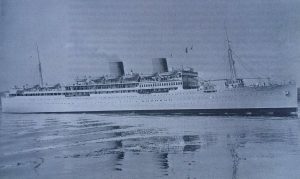
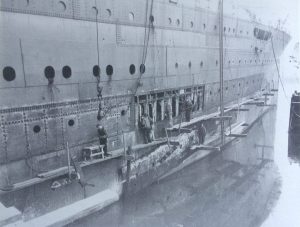
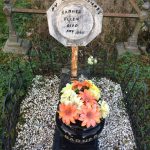 James Barnes, fitter, aged 61
James Barnes, fitter, aged 61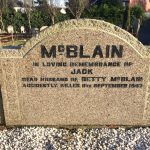 John Davidson McBlain, fitter, aged 26
John Davidson McBlain, fitter, aged 26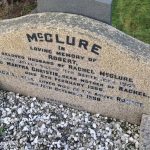 Robert Cairns McClure, fitter, aged 25
Robert Cairns McClure, fitter, aged 25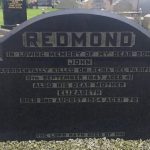 John Redmond, fitter, aged 42
John Redmond, fitter, aged 42 Samuel Richmond, aged 33
Samuel Richmond, aged 33